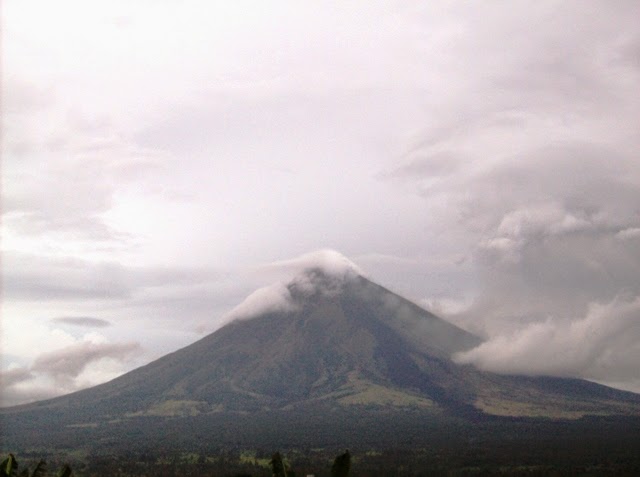 |
| Albay map (photo from the web) |
One of the most familiar sightseeing landmarks in the Philippines
is Mayon Volcano (Mt. Mayon), the most active volcano in the country. The majestic and almost-perfect cone of Mt.
Mayon signifies the focal landmark of the province of Albay in the Bicol region,
a part of Luzon Island.
 |
| Majestic Mayon (photo from the web) |
Another place of interest in the province of Albay is the Cagsawa (Cagsaua) Ruins
Park. Indeed, it was an awesome educational experience touring
this place. According to its history, the Cagsawa church was built in 1724 but
buried by rocks and lava when the mighty Mayon Volcano erupted in 1814. The only visible remnant of the church is its
belfry which offers a whole different perspective of how a town perished under
the destructive power of Mayon.
The Daraga Church in Daraga, Albay is another iconic landmark in
the province and considered as one of the National Cultural Treasure of the
Philippines. Built in 1772, the church is said to be a fine example of Baroque
architecture with its quite famous façade in Churrigueresque architectural
style. While churchgoers relish in the antiquity of its structure, the location
of Daraga Church is relatively noticeable. Setting atop a hill overlooking Mayon Volcano, churchgoers and tourists alike take pleasure in its magnificent scenery.
 |
| Daraga Church (photo from the web) |
 |
| magnificent view @ Daraga Church (photo from the web) |
Tourists visiting the province of Albay will also indulge in
appetizing local cuisines like Pinangat which is a blend of taro leaves, chili,
meat and coconut milk wrapped in gabi leaves and Bicol Express,
pork cooked in coconut milk with shrimp paste and chilies.
The Legazpi Airport, Albay's gateway from Manila and CebuCity in the Visayas caters the visiting tourists of the province.







No comments:
Post a Comment